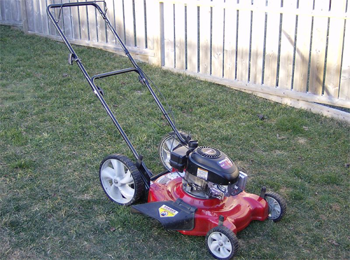 Now that your landscaping is put to bed for the winter, it's not quite time to sit back and put your feet up. If you want your Cleveland landscaping to be prepared for spring, you've got one more task to take care of before your long winter's nap: winterize your lawn mower. When your lawn mower is properly winterized, not only will it start up happily in the spring, but it will run well and last much longer.
Now that your landscaping is put to bed for the winter, it's not quite time to sit back and put your feet up. If you want your Cleveland landscaping to be prepared for spring, you've got one more task to take care of before your long winter's nap: winterize your lawn mower. When your lawn mower is properly winterized, not only will it start up happily in the spring, but it will run well and last much longer.
A good lawn mower will serve you for many years, but it has a better chance of running well and staying in good condition if you prepare it for long idle winters. Just as your car wouldn't be in good shape after sitting dormant in the cold for months on end, your lawn mower needs some attention.
If you don't want to take care of these tasks yourself, you can hire them out, but if you learn to take care of them yourself, you can ensure that they'll always get done. Here's what you need to do.
1. Add fuel stabilizer. When gas sits in your mower all winter long, the mower's carburetor can get clogged. When spring comes along, you'll have to pay a professional to unclog the carburetor, and that's not a cheap job. If you plan on storing your lawn mower in the basement for the winter, run the engine until the gas is all gone. If you keep it in the garage or a shed, however, add some fuel stabilizer, which you can buy at gas stations and home centers.
2. Clean and clear the mower decks. If you peek underneath your mower, you'll find the trimmings of your lawn and landscape stuck to your mower's underside. Scrape all the grass clippings away from the mower deck to keep it from rusting. Hose it off right after you finish your final mow of the fall. You can also accomplish this task by using an old pot scrubber. After the mower is clean, spray silicone spray all over the housing to prevent future build-up.
3. Sharpen the blades. When spring comes, you'll want to use the mower right away, so get those blades sharpened now. Your local home center or garden store probably offers this service.
4. Replace the spark plug. Lawn mower spark plugs usually last about 100 hours of operation. You can tell if they need to be replaced by seeing if they're corroded. In the fall, check the spark plug for corrosion. If you don't see any, remove it and pour about an ounce of motor oil into the cylinders. Then crank the engine a few times before putting the spark plug back in. If the spark plug is corroded, buy a new one and install it.
5. Check the air filter. Your air filter may or may not need replacing every year, depending on how much you use your mower. Check the user's guide for your mower to see how frequently you should change your air filter.
6. Replace worn belts. Check belts for brittleness and cracks. Replace them if they're worn out so you won't have any surprise repairs in the middle of your first spring mow.
7. Change the oil. Changing your mower's oil regularly will extend the life of the engine--the most expensive part of the mower. Refill the oil reservoir according to the level on the dipstick. Too much oil is as detrimental to the engine as too little.
With a winterized mower, you'll be ready to tackle your Cleveland landscaping when spring rolls around. Now it's time to relax.
Photo Credit: DuffDudeX1, from Wikimedia Commons
Author: Joe Schill

